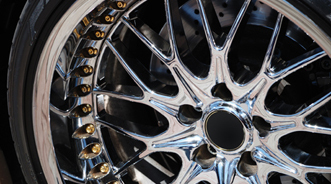Changed Mindset Nets Huge Used Retail Opportunity for Hendrick Automotive Group

Hendrick Automotive Group saw an opportunity for change.
As president and chief executive officer Ed Brown put it, the retailer was wholesaling “too many” of its used cars. There were potential bottom-line benefits for the dealer group if it were to take units that it would ordinarily wholesale and sell them retail instead.
Thus, as an off-shoot of this strategy shift, Hendrick Affordable was born.
This segment is one of four comprising Hendrick’s branding, the others being new, certified pre-owned, and an upcoming category that’s still in the works.
Hendrick Affordable pertains to cars that have more than 60,000 miles on the odometer. In essence, these cars were once wholesaled because they didn’t fit certain mileage or age criteria. Now, the shift is to sell them retail.
But it’s not like these cars are just thrown on the lot. For starters, they adhere to high quality standards from the dealer group.
And with the retailer owning Hendrick Autoguard, the company is able to put warranties on these cars. The customer gets a three-month, 3,000-mile warranty on the car and can choose to extend that, as well.
Just as Hendrick Automotive does with any car it sells, these vehicles are inspected; should a problem arise, the company policy is to buy it back.
Hendrick Affordable cars come with marketing branding that highlights the cars while distinguishing them from the other segment the retailer offers.
“The program is less than six months old (as of May) and it’s already producing incredible results for us. Our goal, again, is to continue to reduce the number of cars that we wholesale,” Brown said in early May during an interview with Auto Remarketing at Hendrick Automotive Group headquarters along with other company executives.
“Why should we take the cars that we have that are good vehicles and let somebody else create a customer? We want to create that customer. And we know that if we market it right, we’ll get the customers, because it’s happening.”
During the interview, Brown touched on the group’s motivation and story behind the program.
“We were doing a great job at getting the vehicles into our company, because we were selling a lot of new cars. And then we had a lot of precise criteria that we put on a car; it had to get over a lot of different hurdles, quality hurdles,” he noted. “One of the dynamic changes that have occurred over the last decade with vehicles is that they’re so much better now. The quality of all vehicles — not just the Japanese, or the imports or the high-lines — has improved. Every car is good. And so that means they last longer.”
The mindset the company had, Brown said, was that if a car got to a certain mileage or age, they would wholesale it.
Not anymore.
“Clearly, we were giving up huge opportunities. And so (vice president of variable operations) Chris (Little) led the effort to develop what we call Hendrick Affordable,” he added.
Faster Turns
In addition to its focus on wholesaling fewer vehicles, Hendrick is also honing in on moving vehicles off their lots faster.
Again, it boils down to a changed mindset, as Brown illustrated.
“The mindset that CarMax started with is ‘what is the return on the space?’ We don’t have that mindset here. We think about, ‘Well, here’s a car, let’s go ahead and market that car, etc.’ As opposed to ‘here’s a space; if I turn that space three times in a month, it’s a lot better than turning it once a month or once every 45 days,’” he explained.
“So, we think that if we can turn a car in 30 days, that’s pretty good. But if you can turn that space three times, you get three customers; you get the chance to earn the profit margin on the front and the back three times,” Brown continued. “Even if you earn less, three times whatever it is — based upon the return on investment — is more money. But the key is, you create three customers, not one.”
And this is where technology comes into play.
Say a BMW 3-Series arrives on the lot of a dealer in the Hendrick group. There is technology that can give staff what that particular vehicle’s days’ supply would be at that specific store.
So, if the store in question has a high days’ supply of the 3-Series, there might be another store within the Hendrick network that has a shortage and could actually use this vehicle.
Brown emphasized that the group has to start maximizing technology to determine if a certain vehicle makes sense to go somewhere else within the group’s network. He suggested that groups like his are still getting acclimated to this concept; largely, the only retailer to have success with it has been CarMax, he said.
“The historical way of looking at a dealership was that it was an entrepreneurial center. Which was good; it enabled us to have tremendous success,” Brown shared. “Now, if we take a look at our enterprise, our enterprise owns vehicle and it has customers.
“As a vehicle enters the enterprise, where should it go within the system so that we can, as fast as possible, create a customer and make the most money creating that customer? And we’re not there yet, but this is where our minds are. So we have to turn our thoughts into reality.”
Little added: “We’ve got to stop using tradition as an excuse. Mr. Brown’s vision and leadership is starting to make our dealerships become more aware of the potential … we’re looking forward to the challenges, because they’re bearing fruit already.”
Joe Overby can be reached at joverby@autoremarketing.com. Continue the conversation with Auto Remarketing on both LinkedIn and Twitter.


